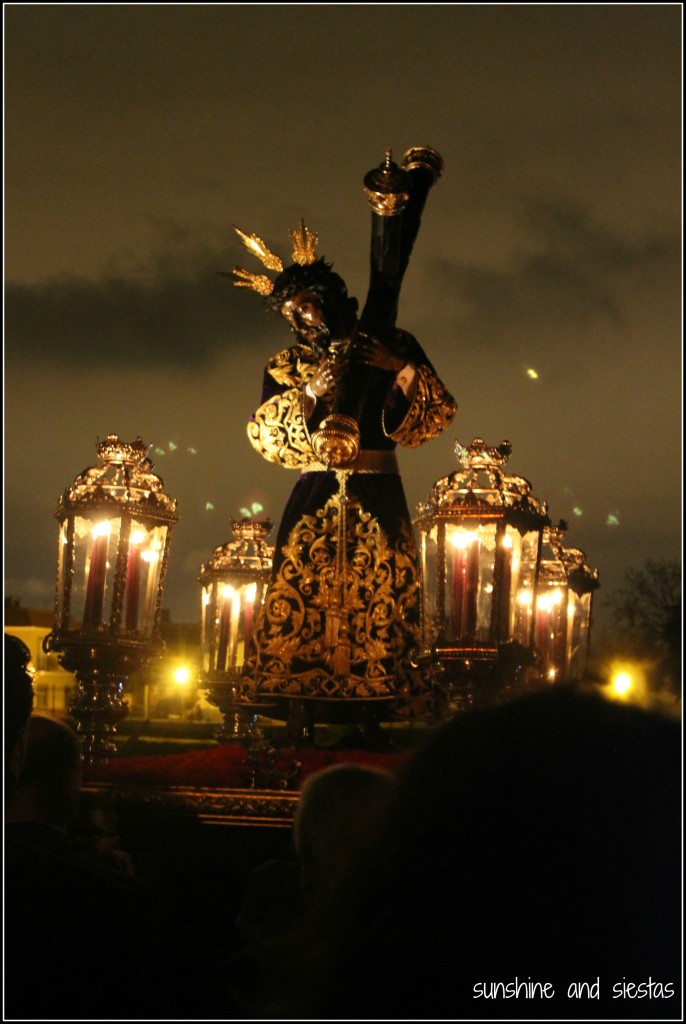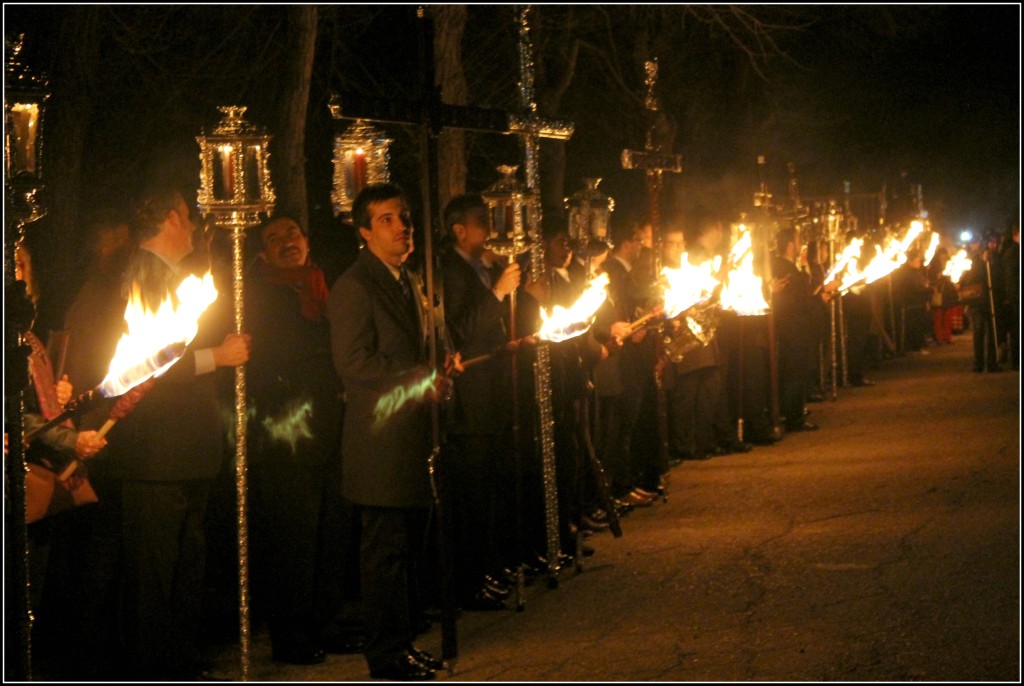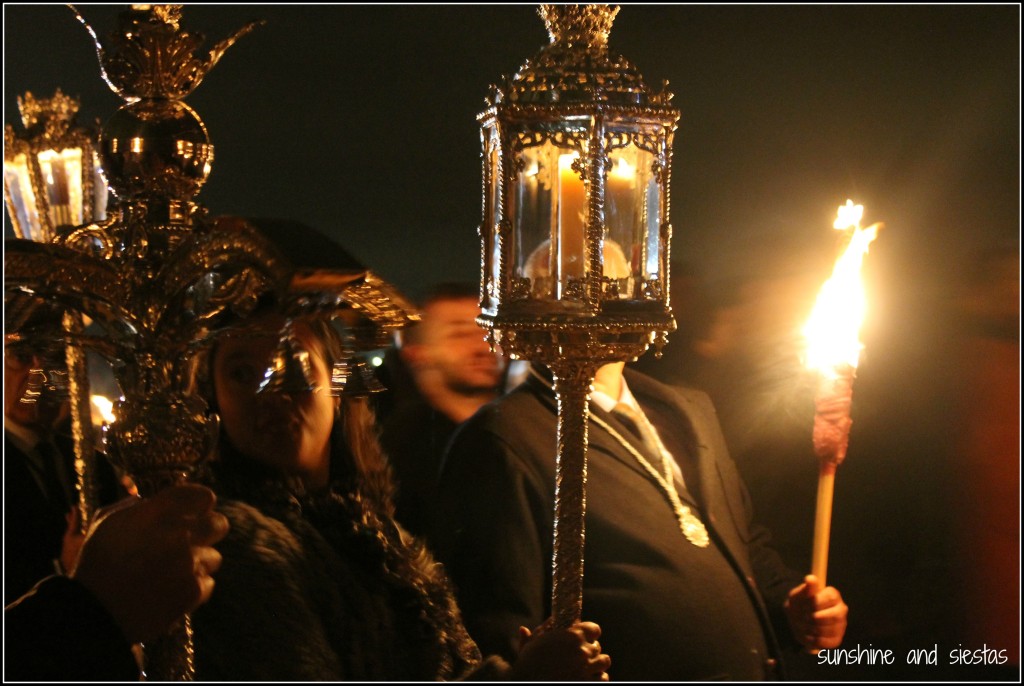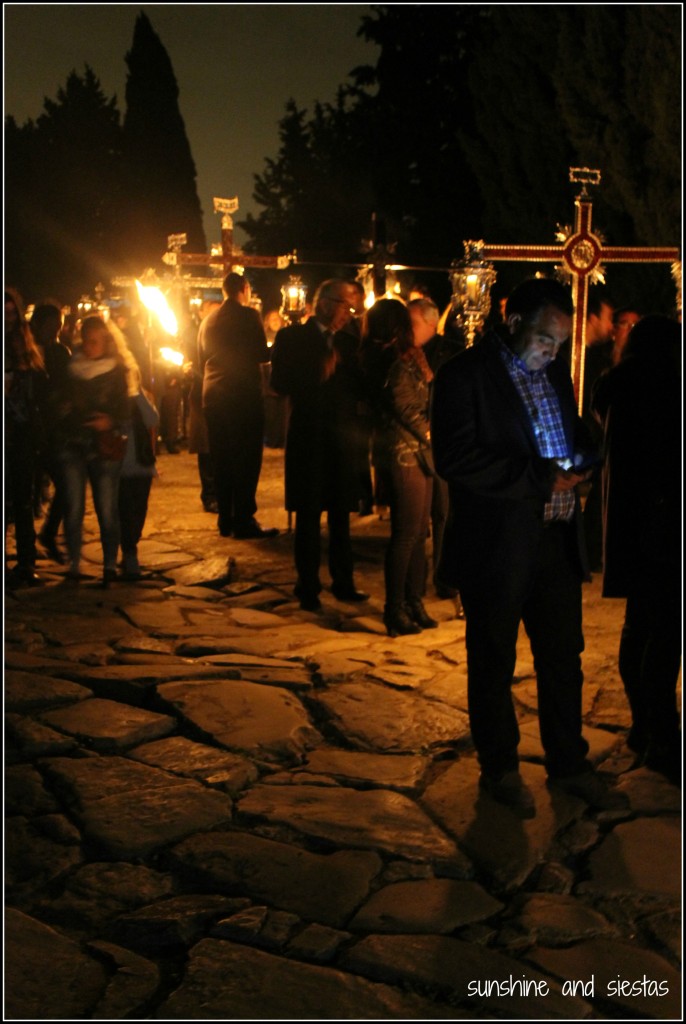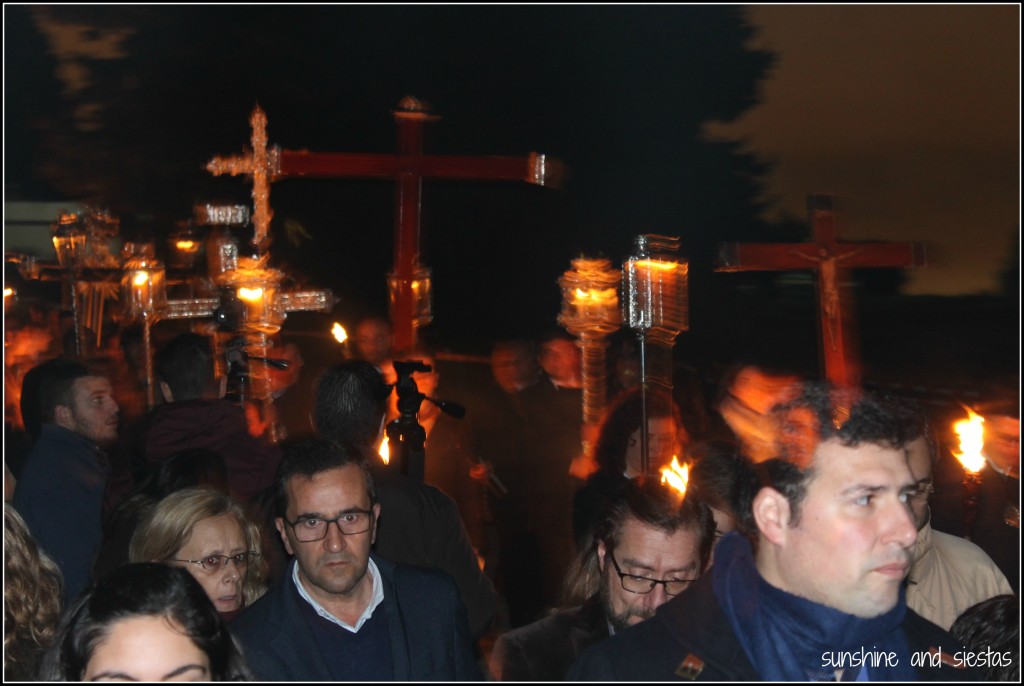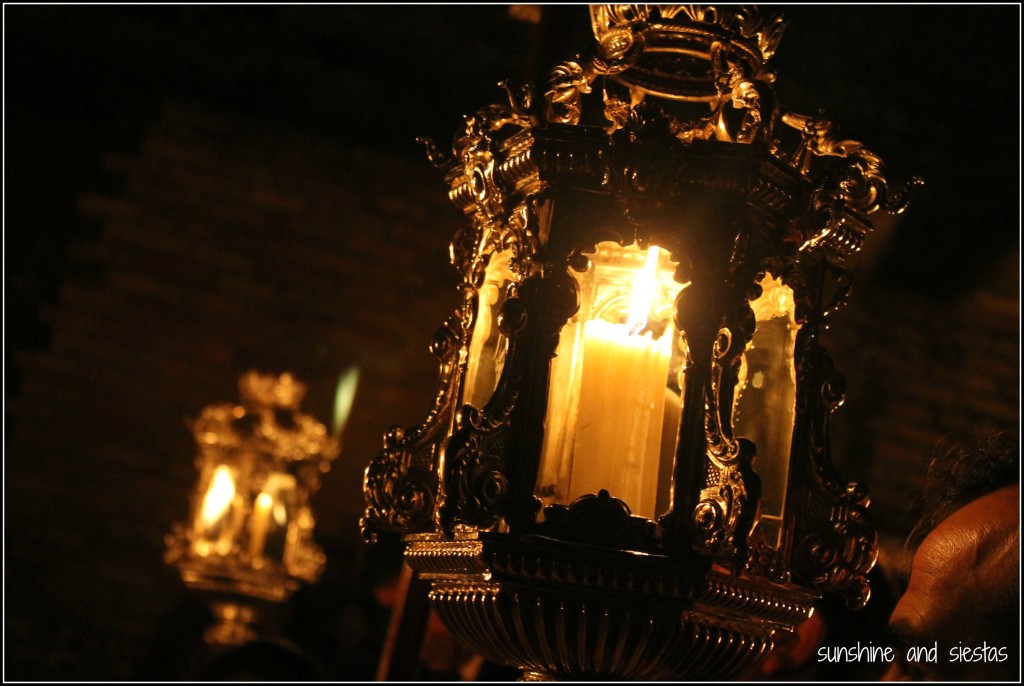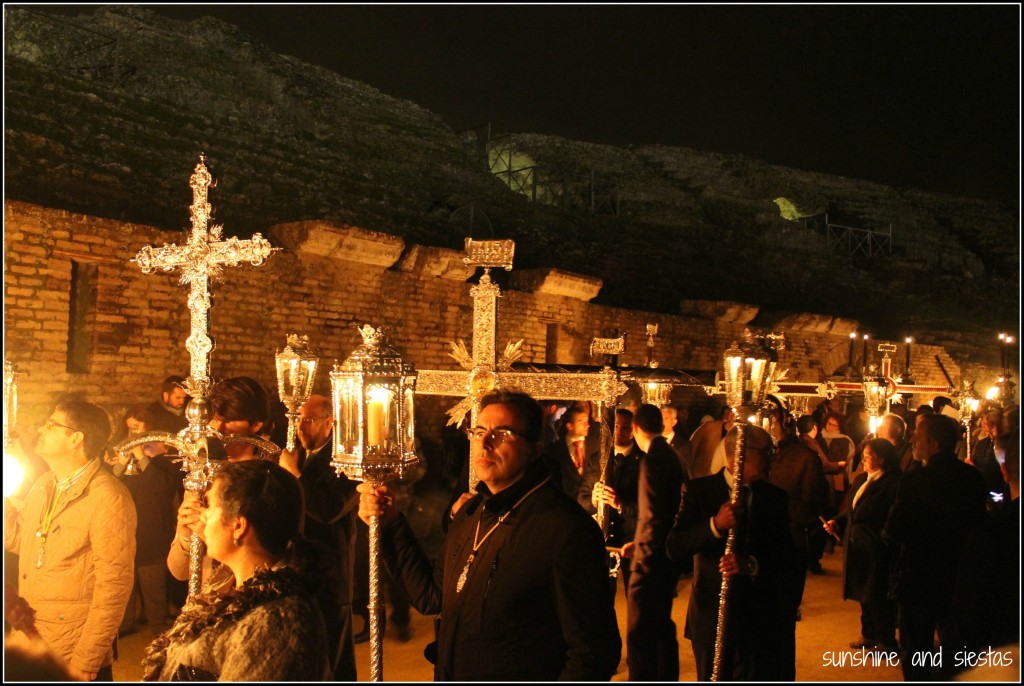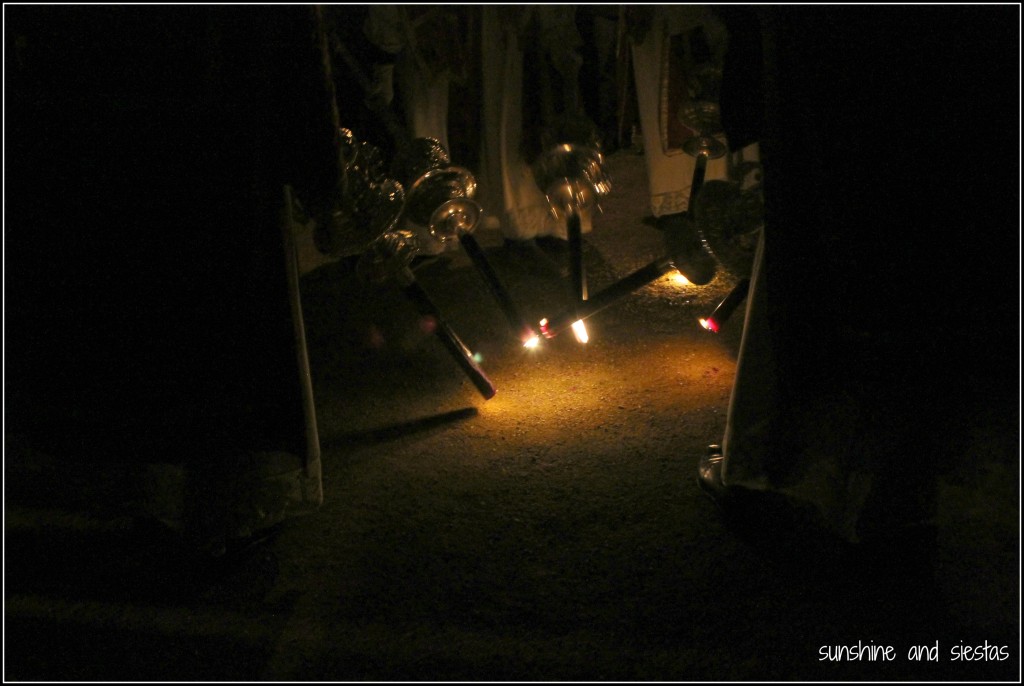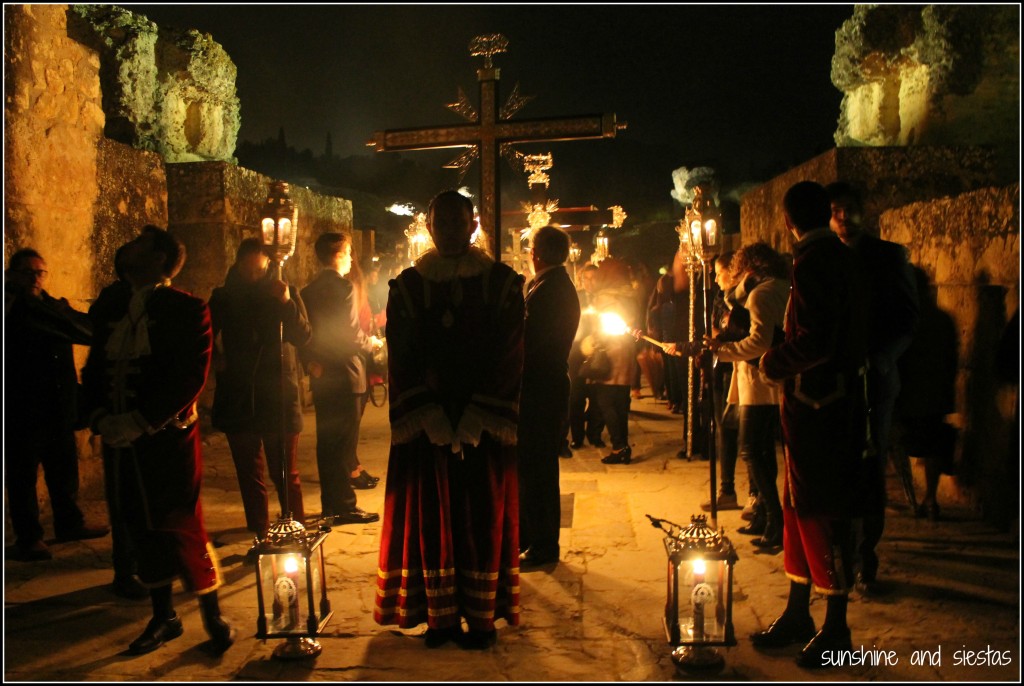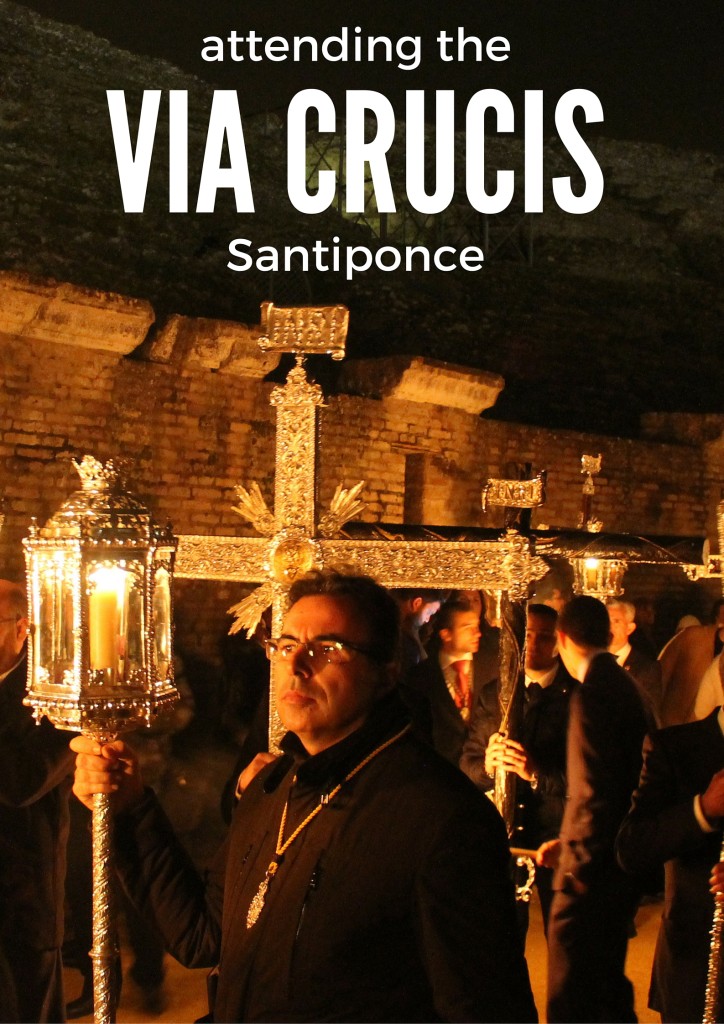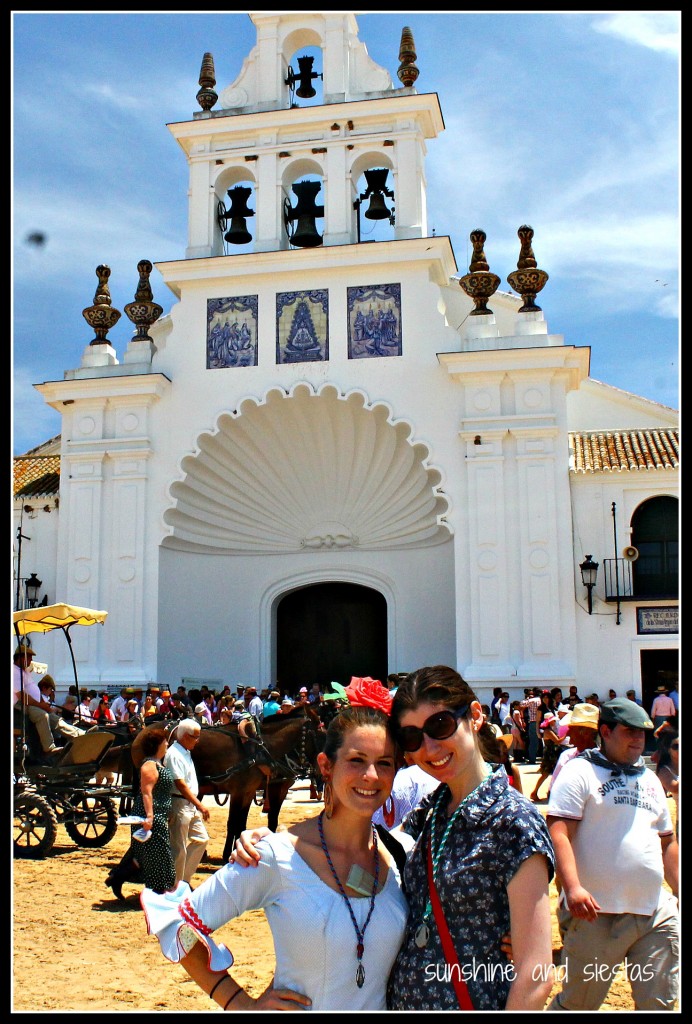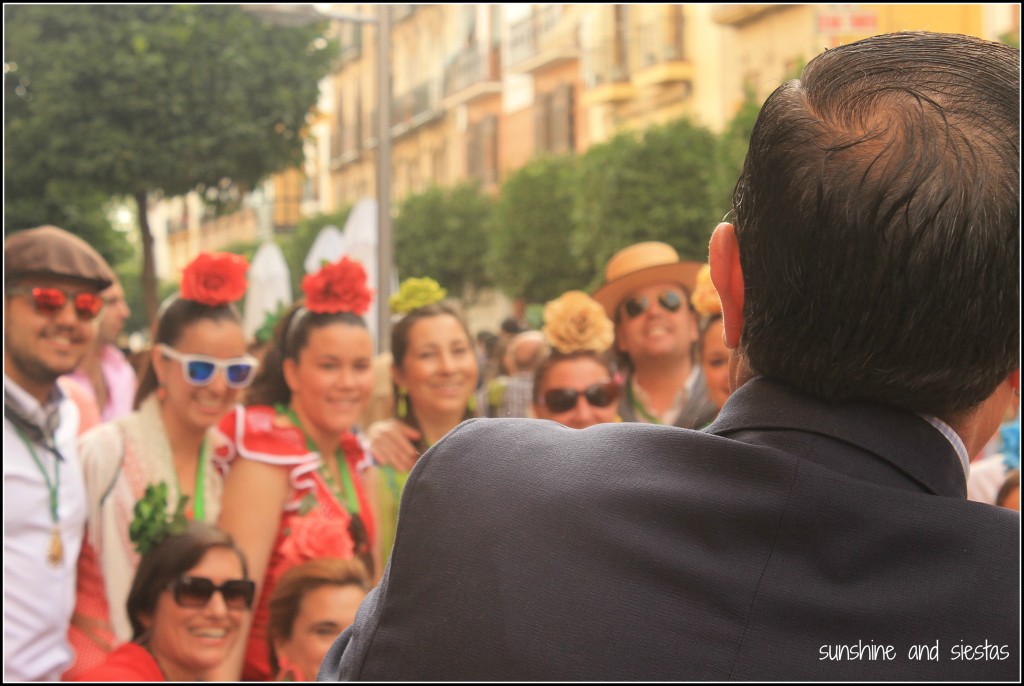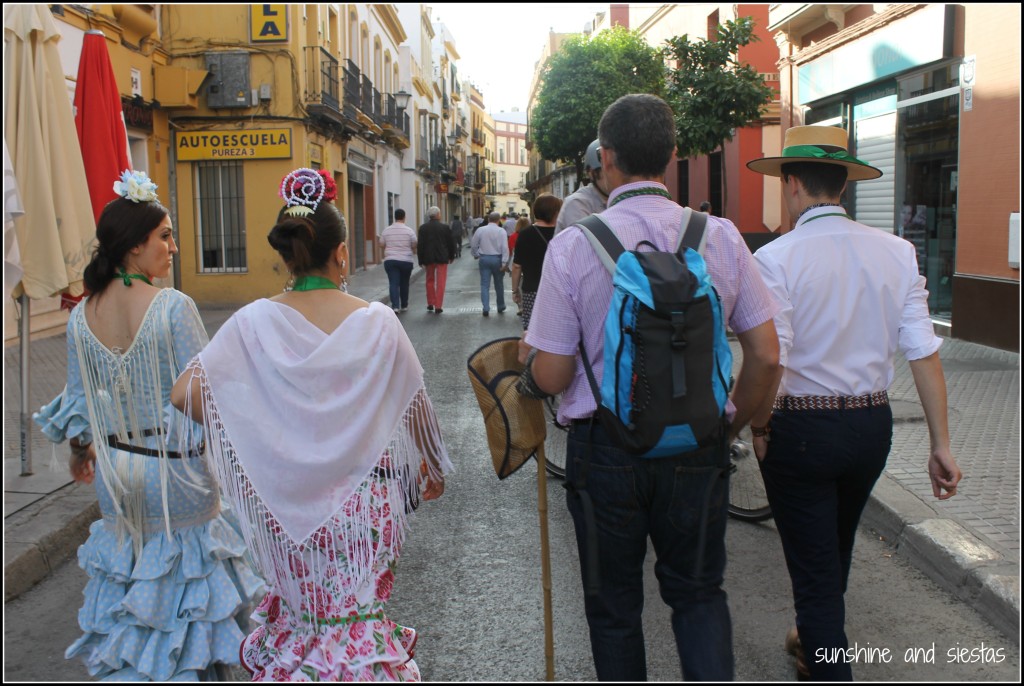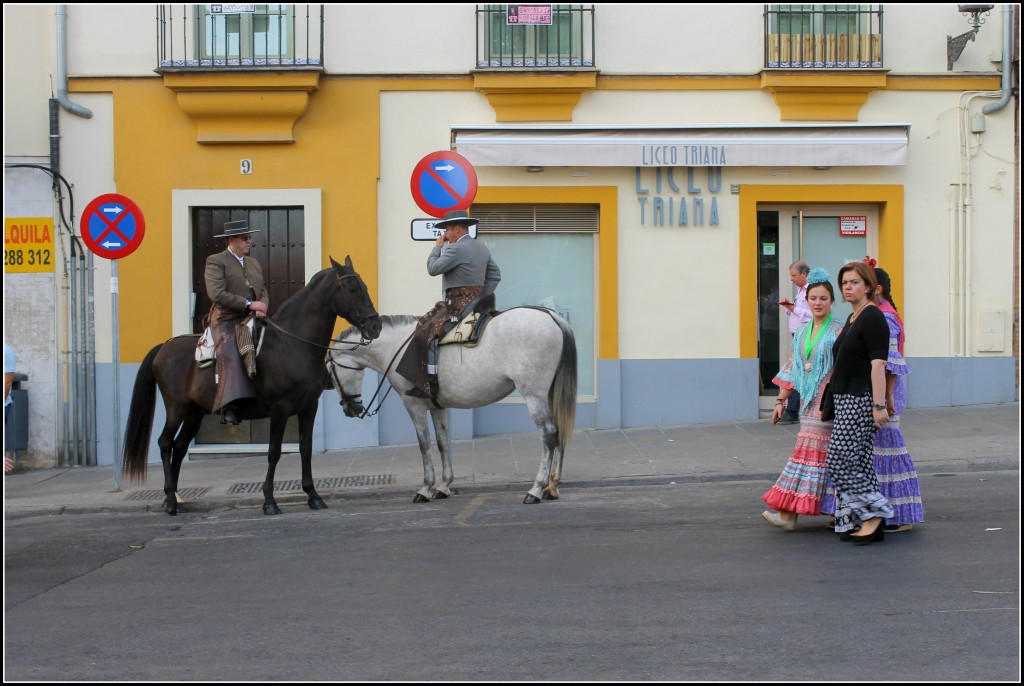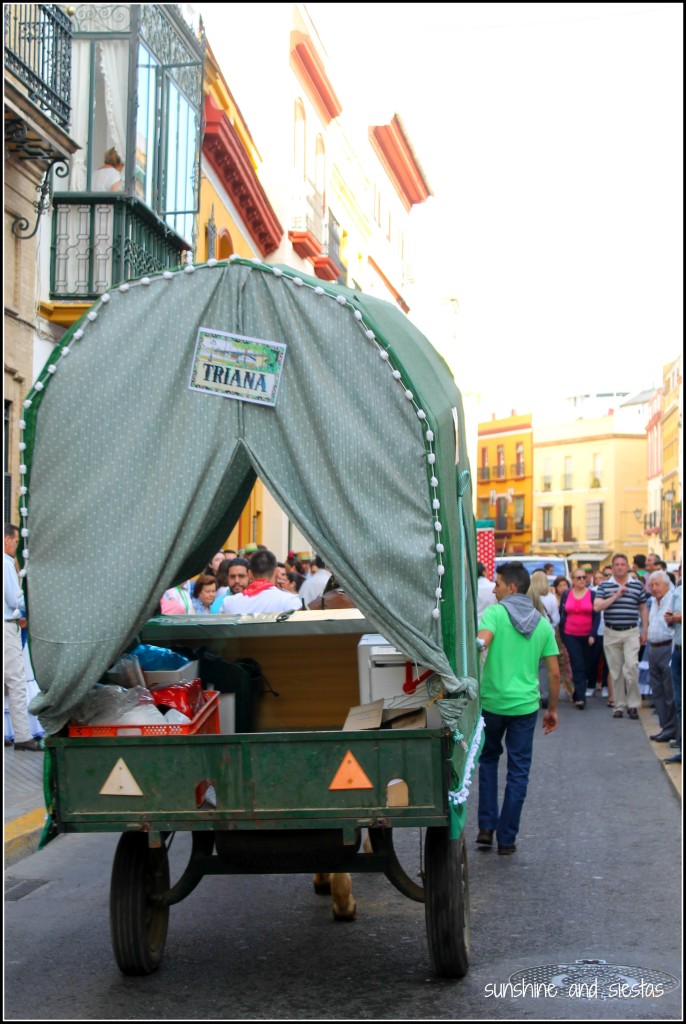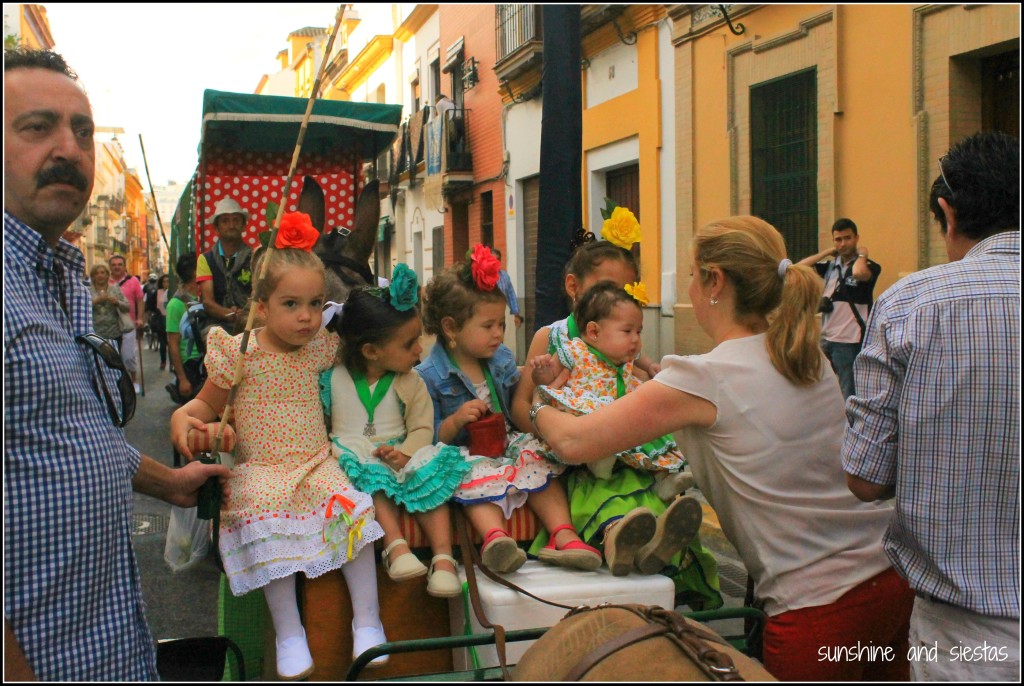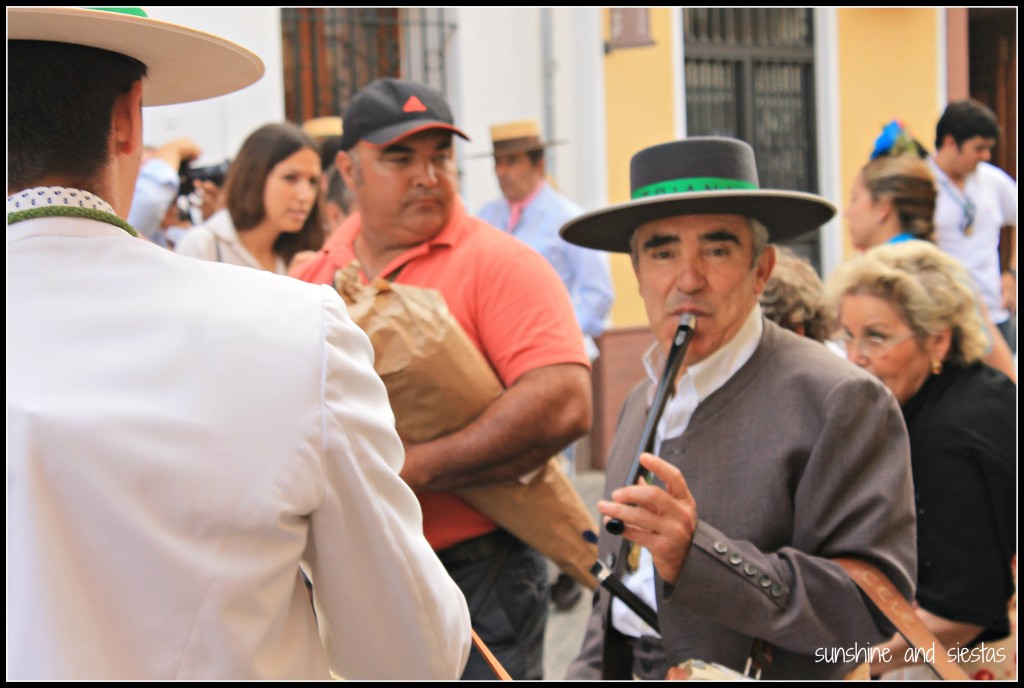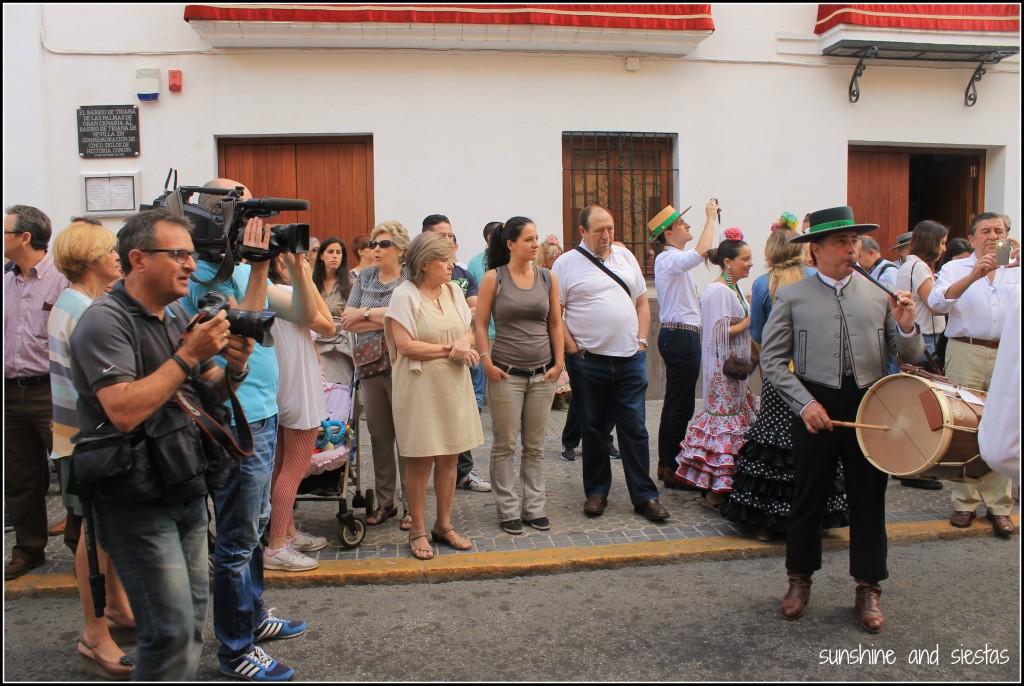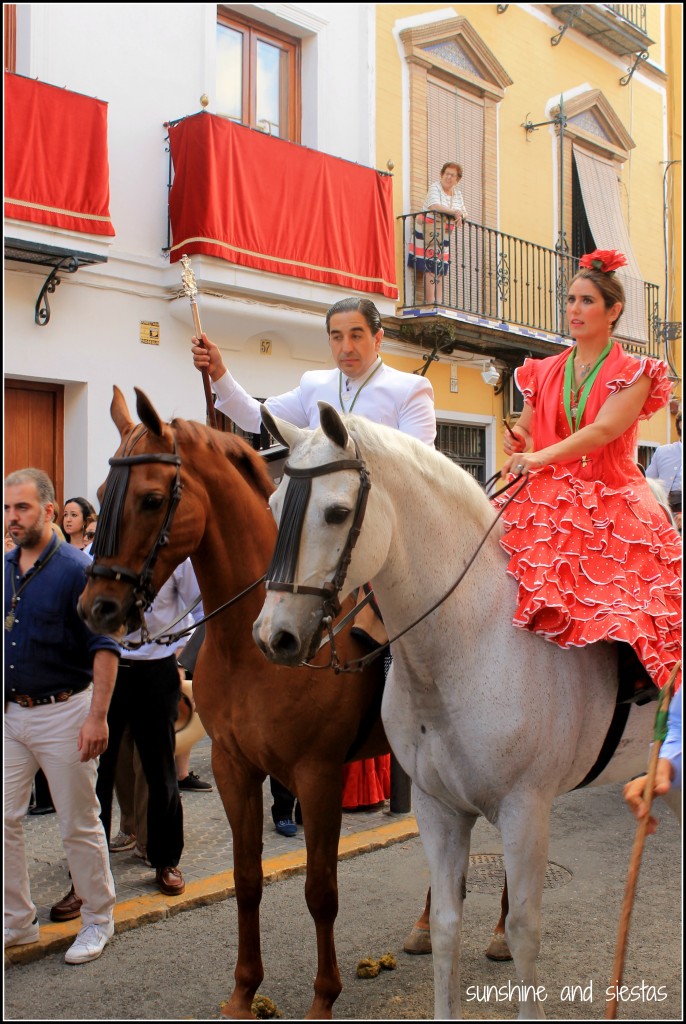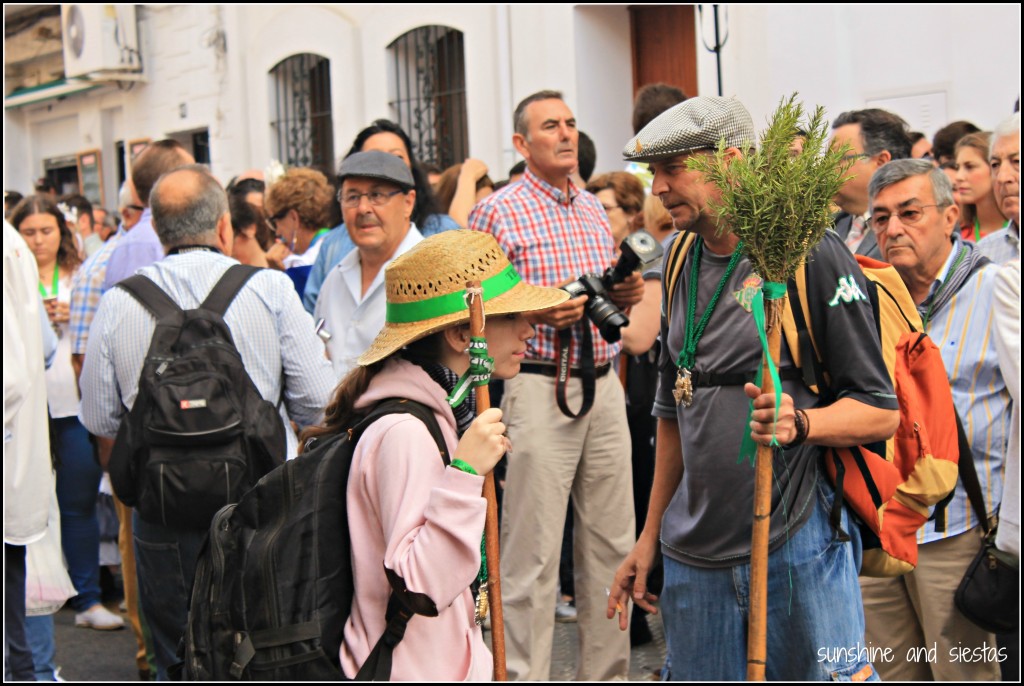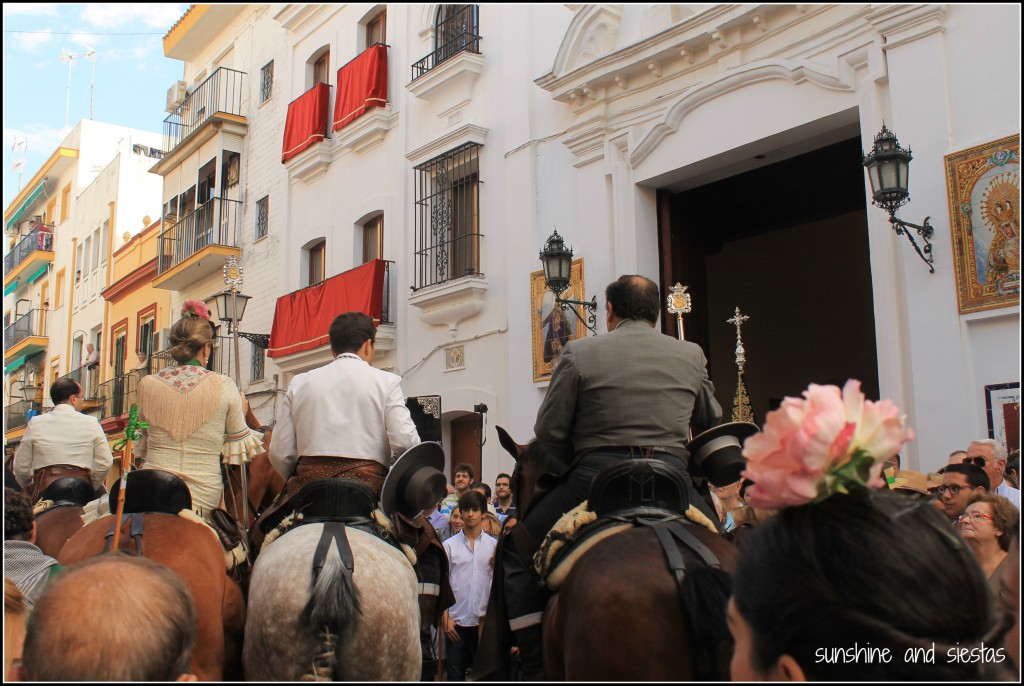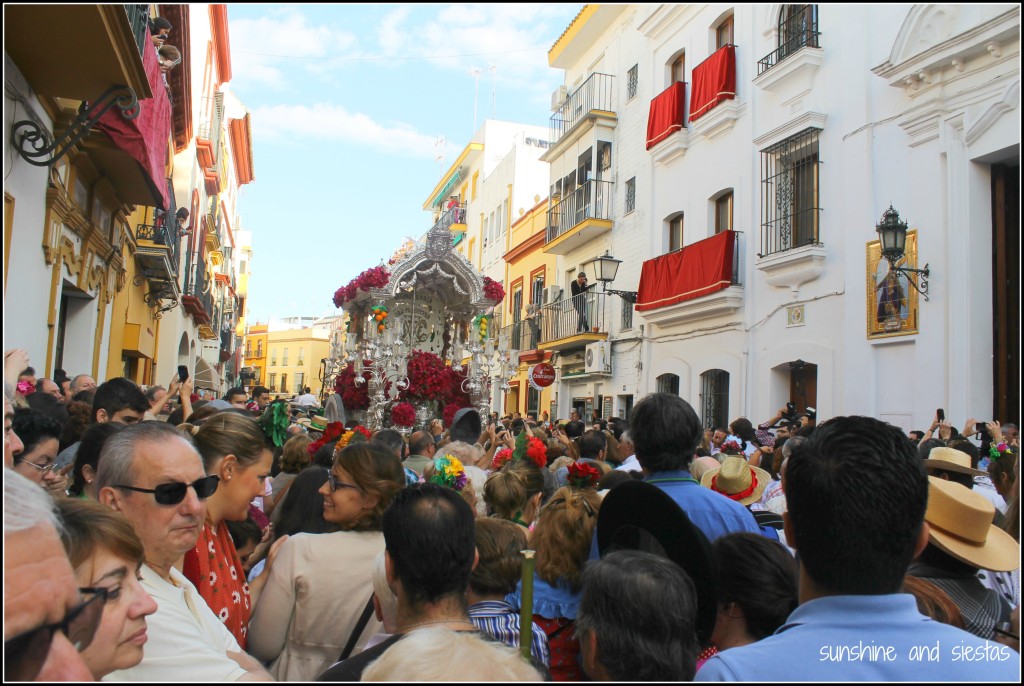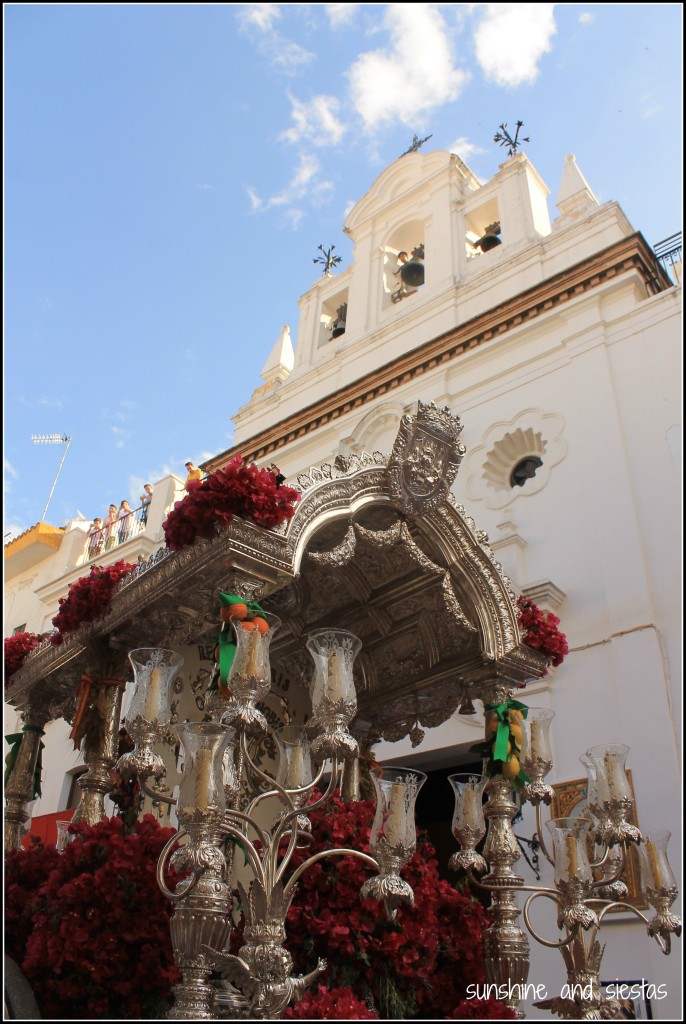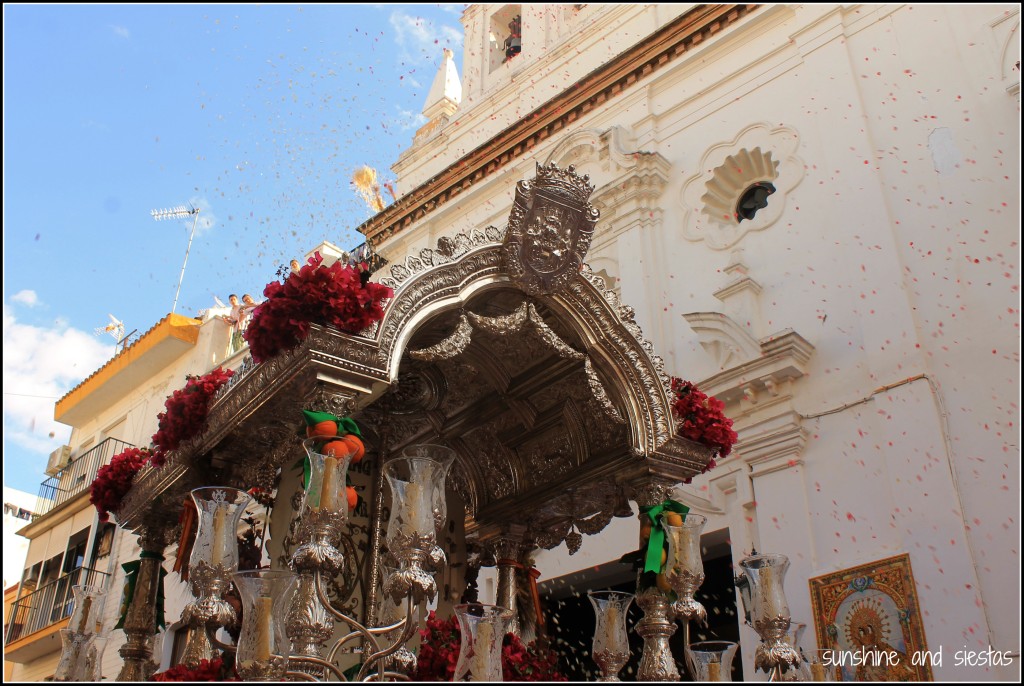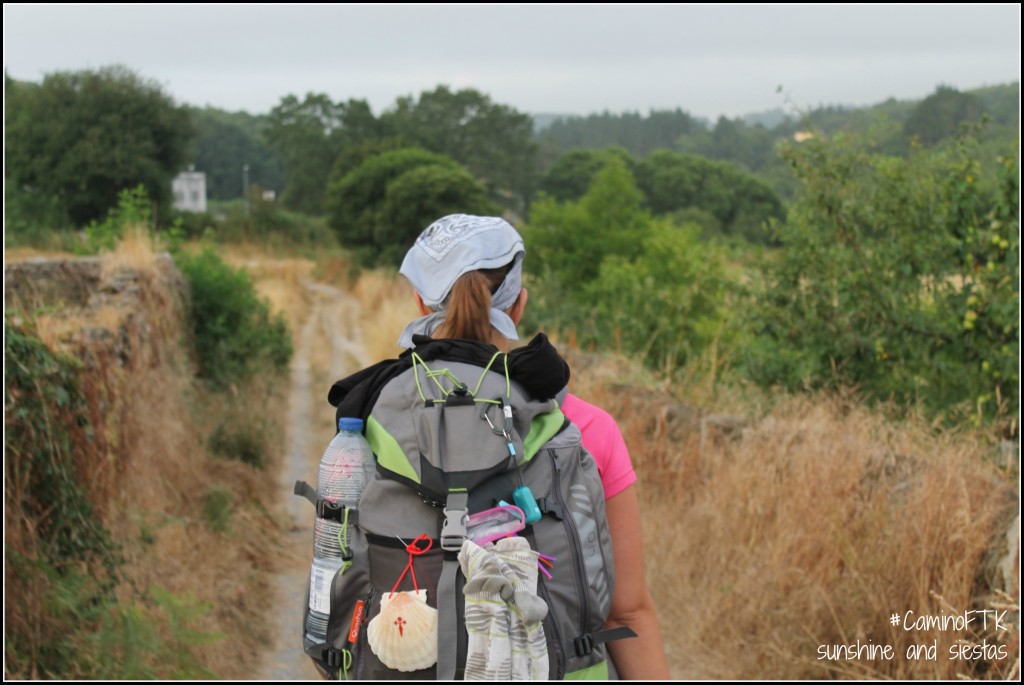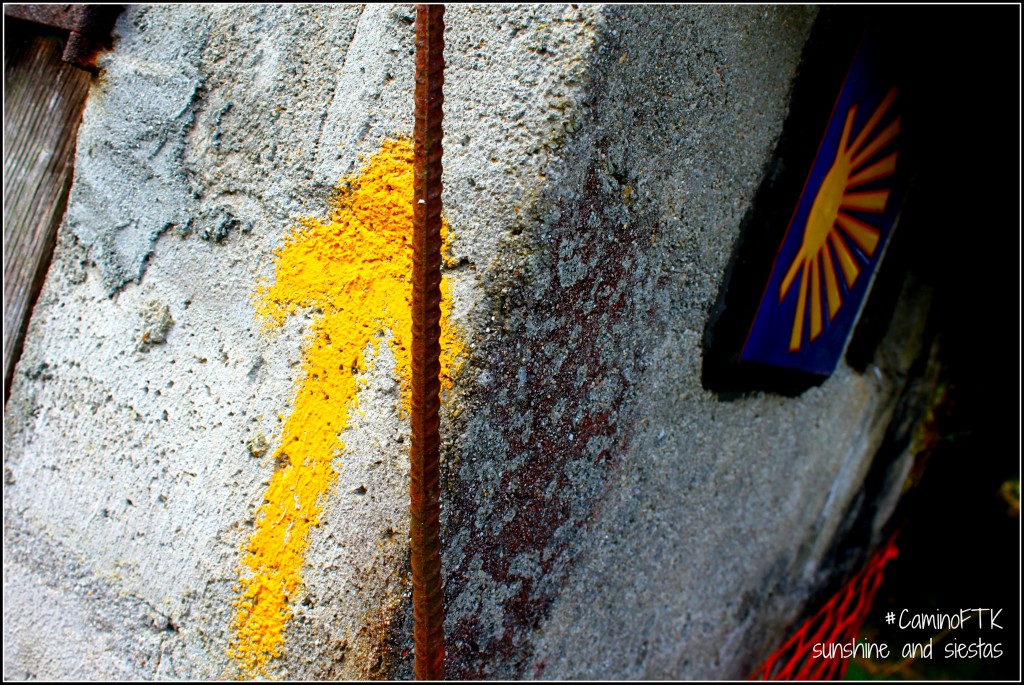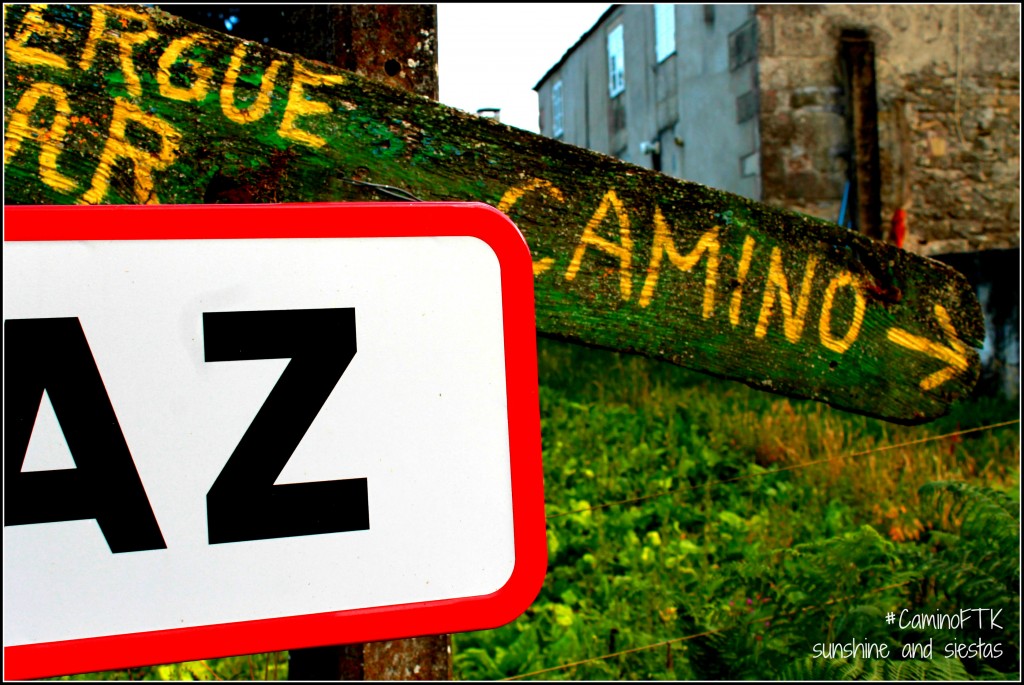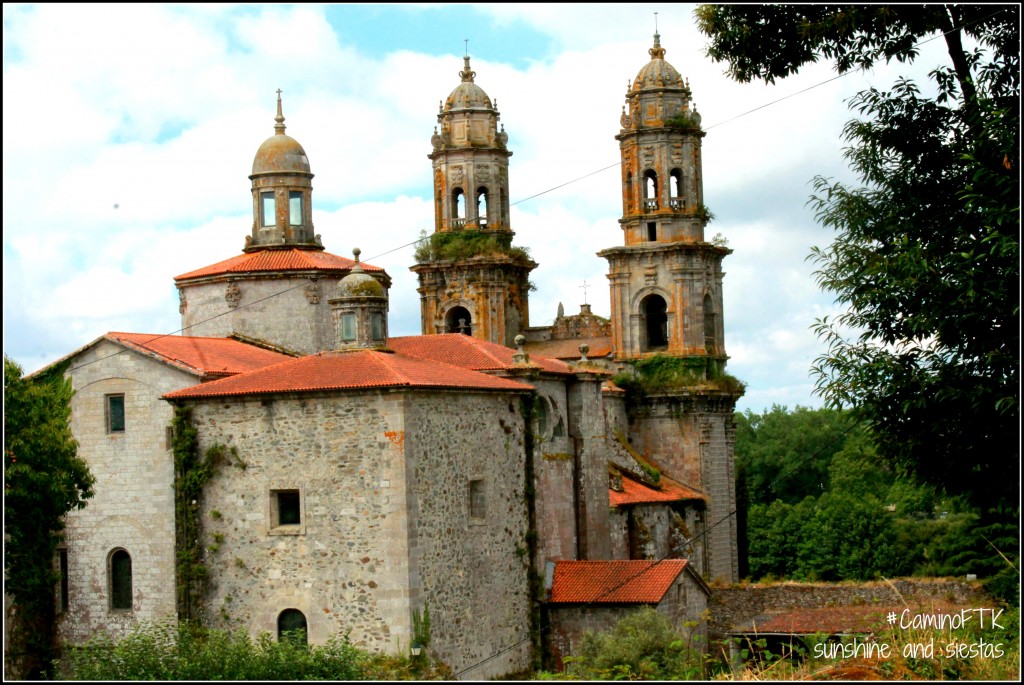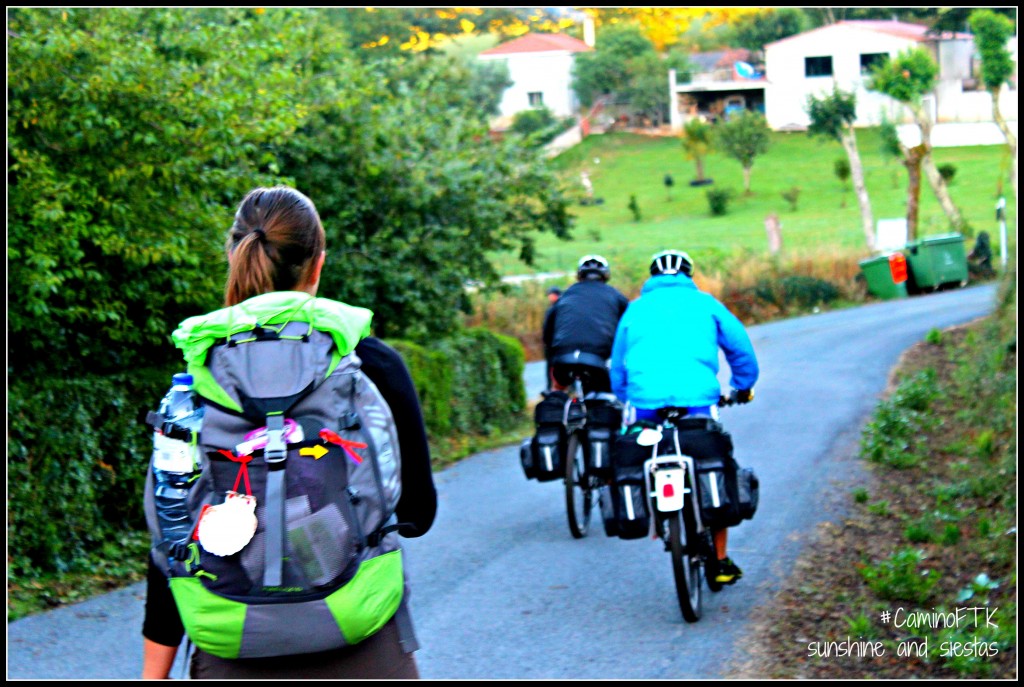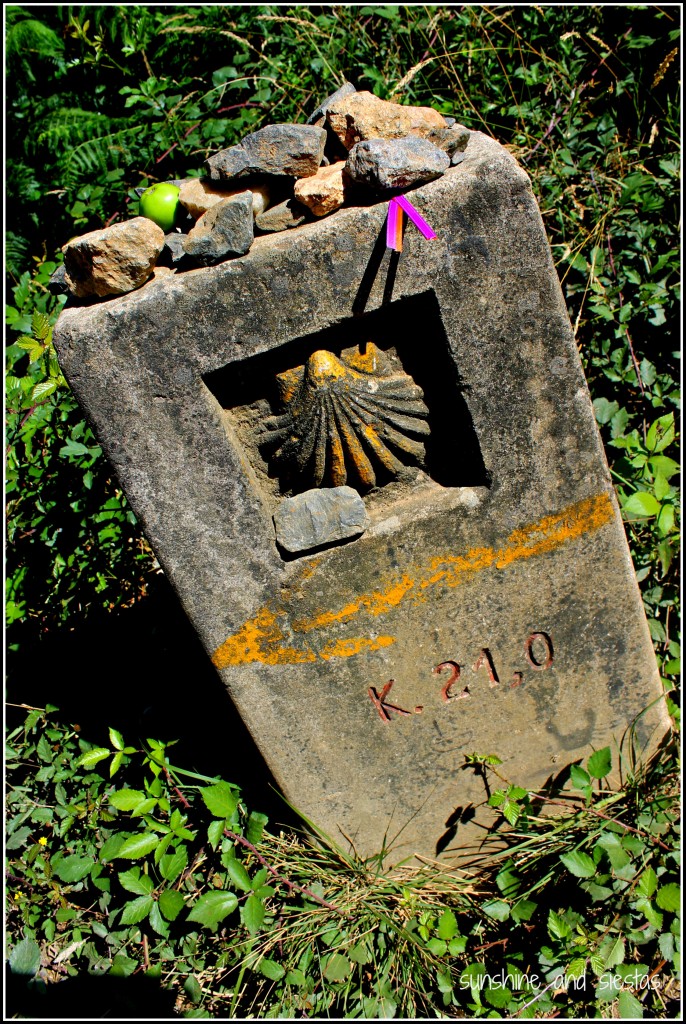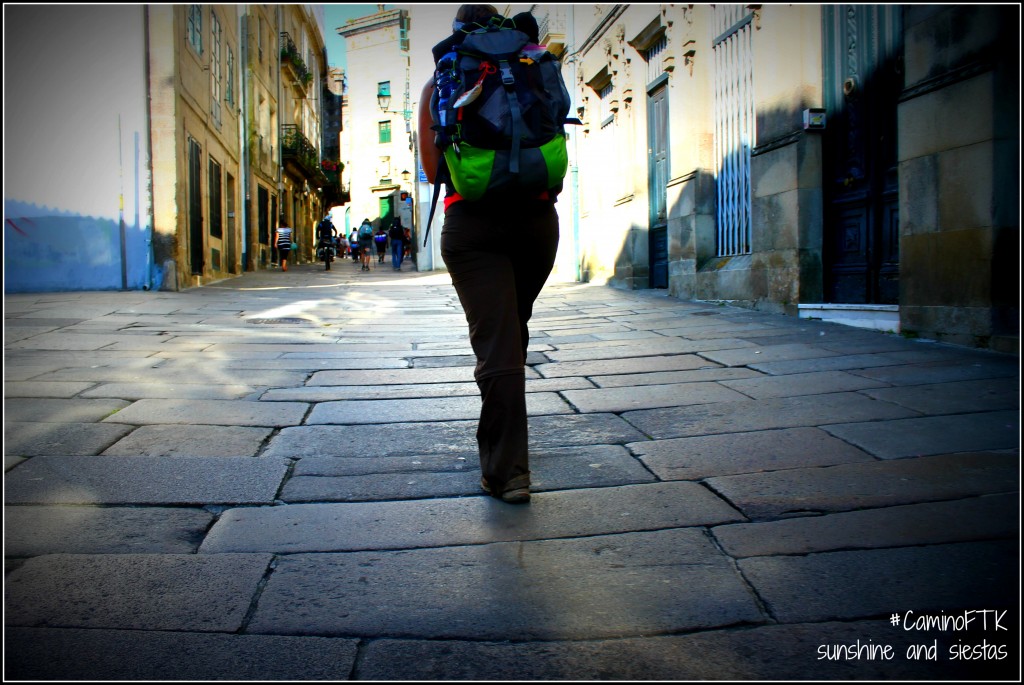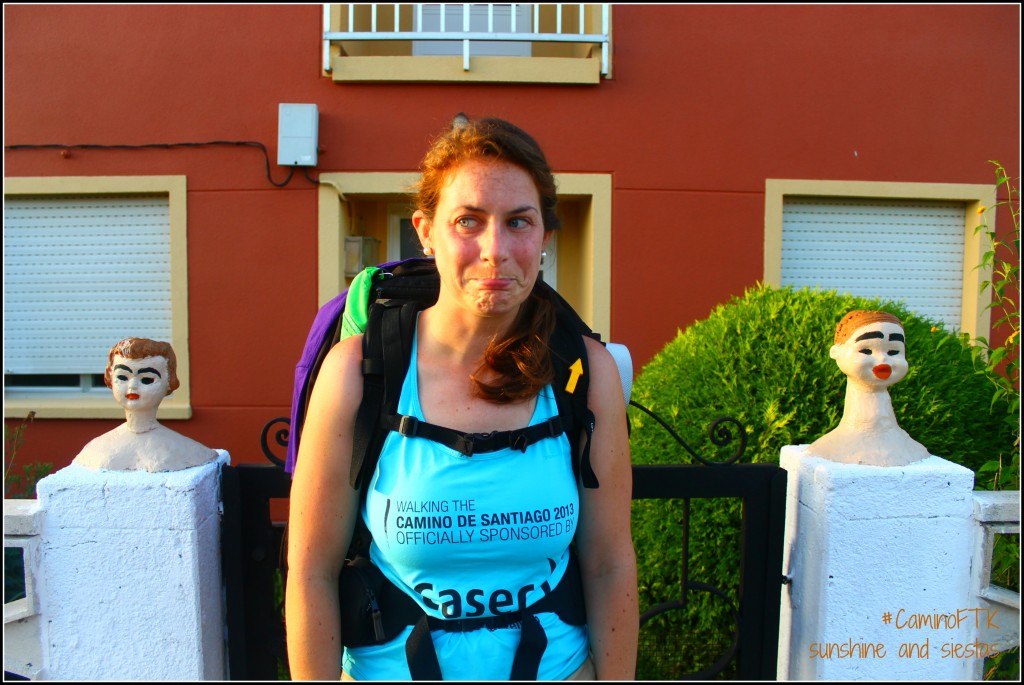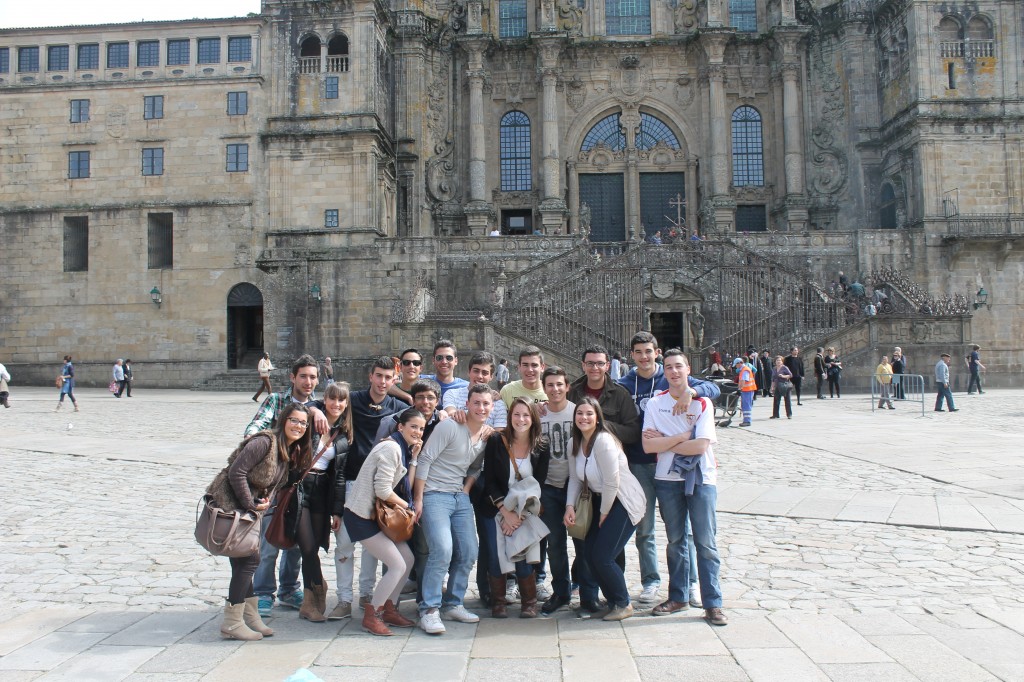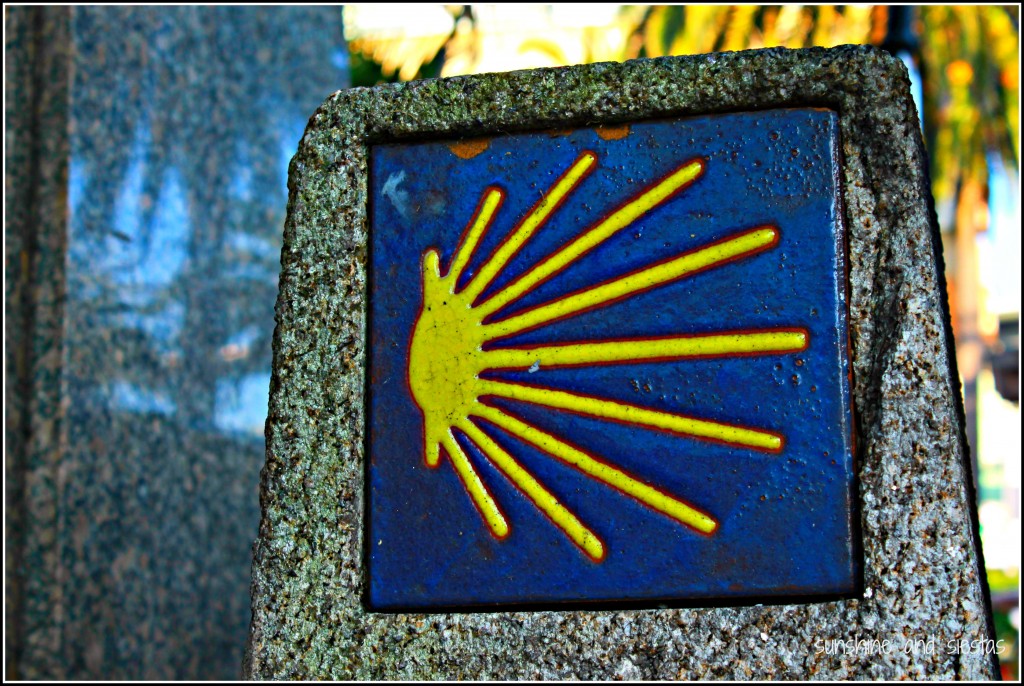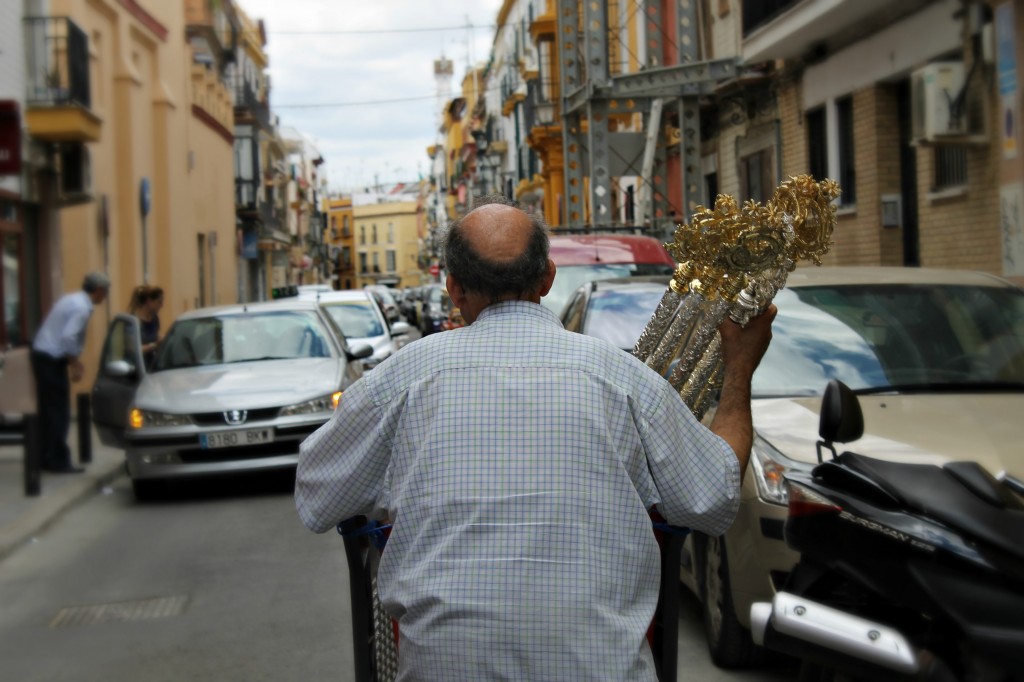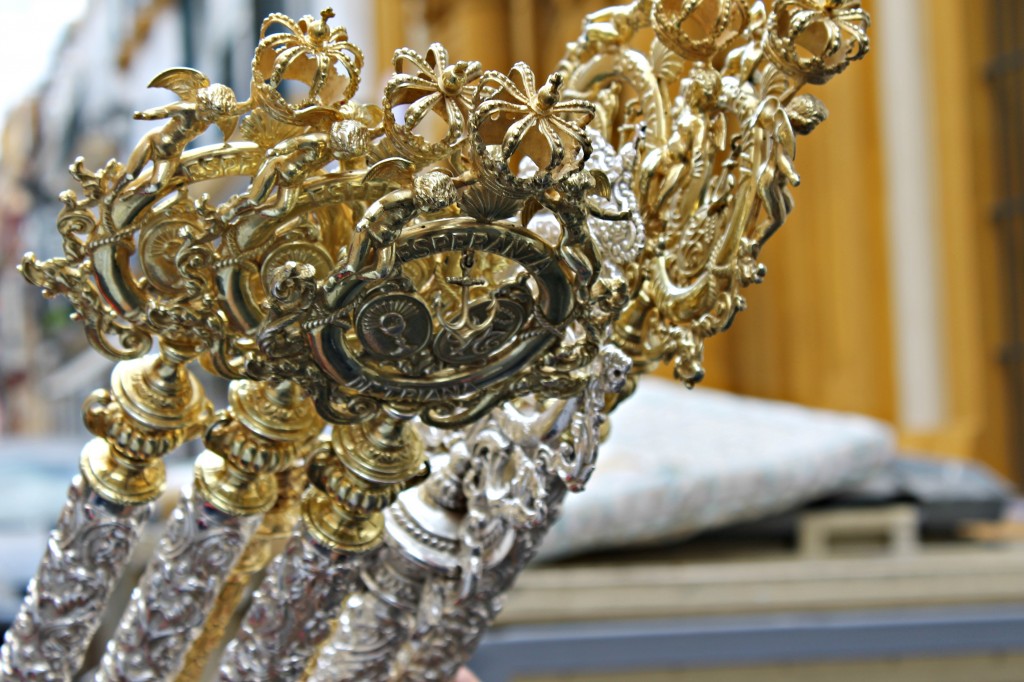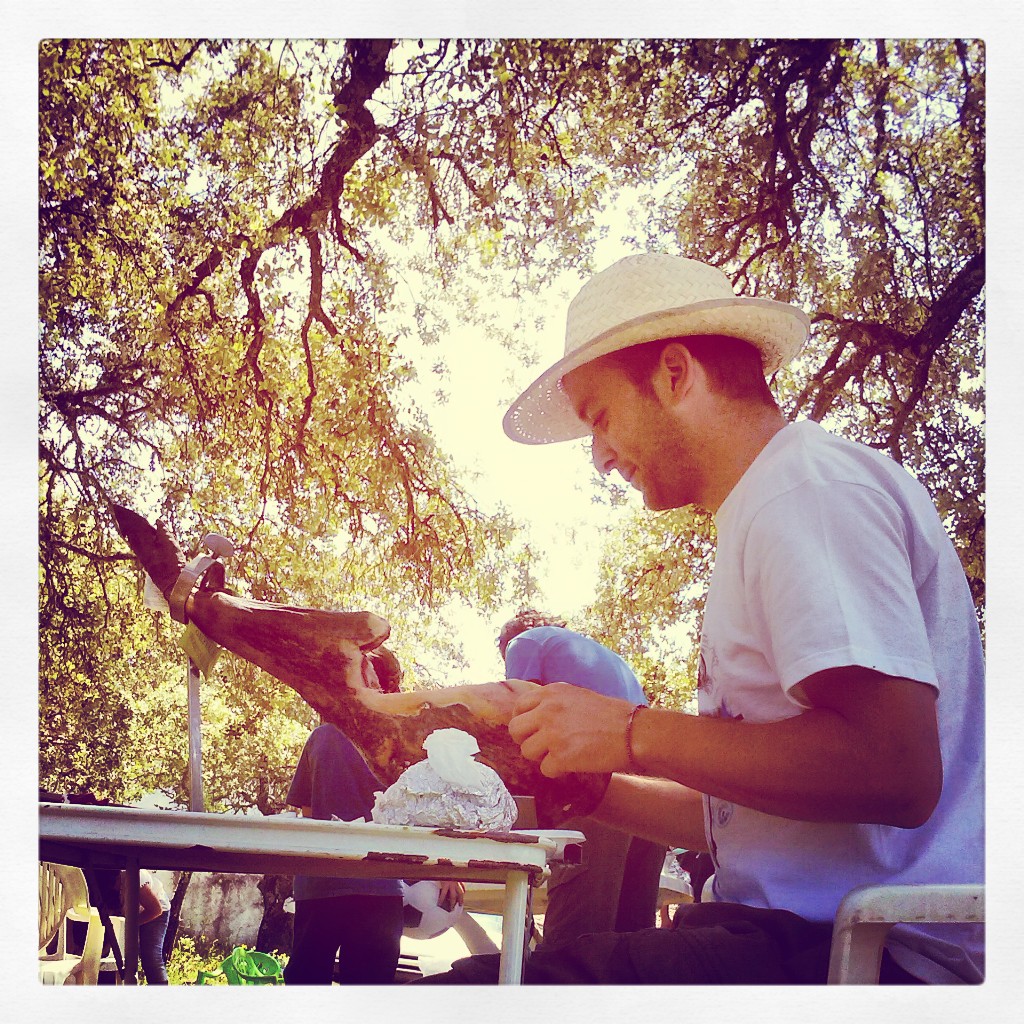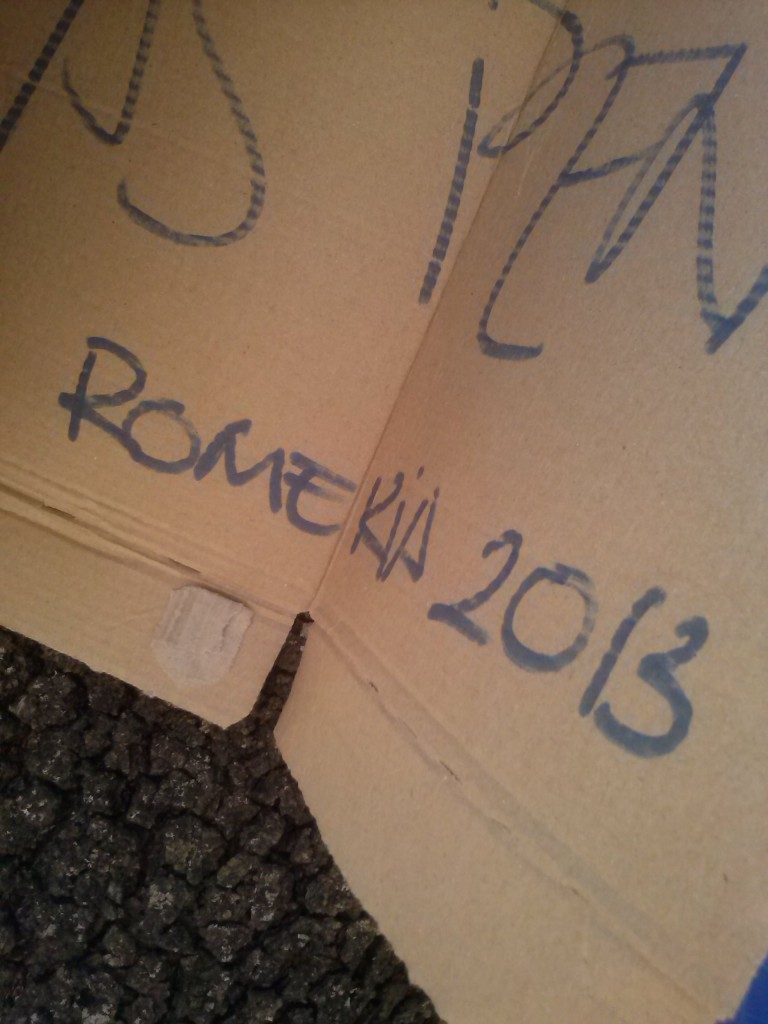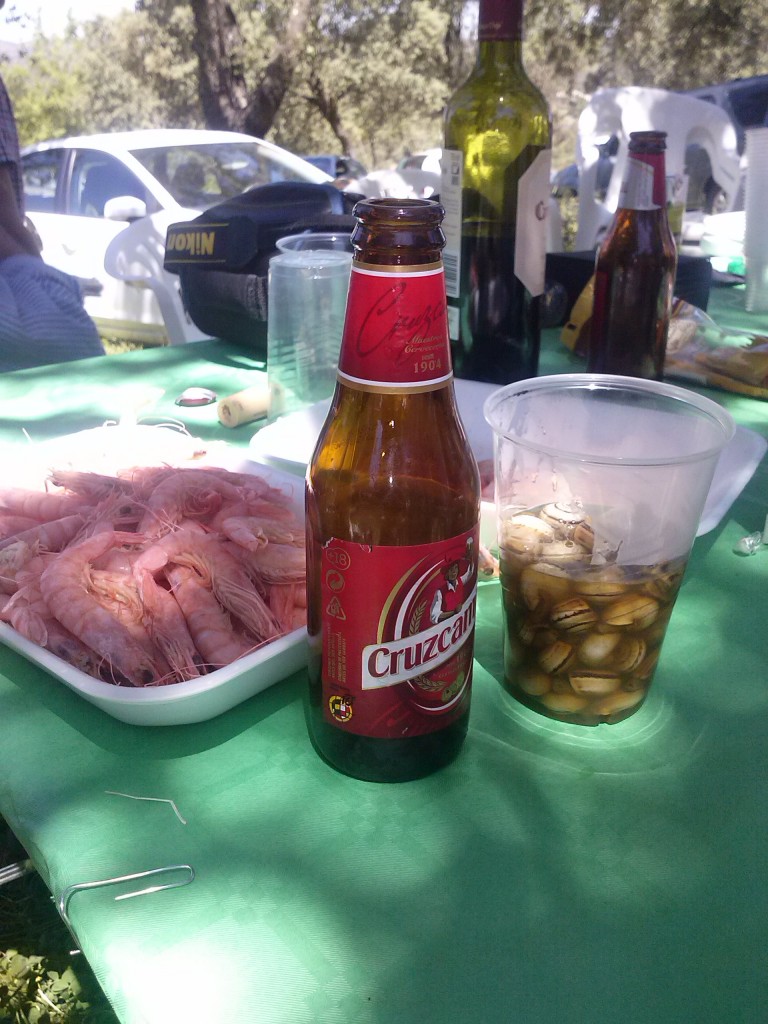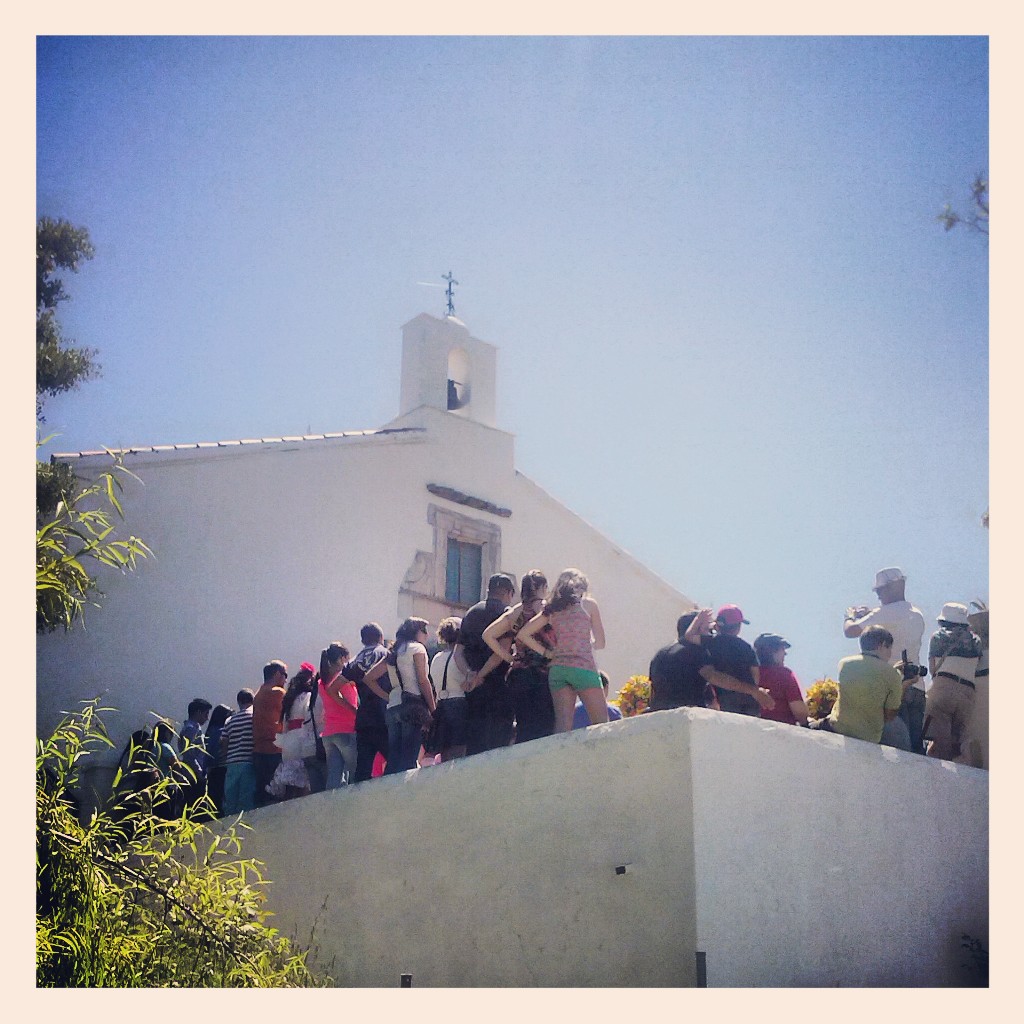Torches lined the gravel path, which inclined ever-so-slightly upwards. Mari Carmen had taken hold of my arm and was pulling me forward through the crowds as pebbles rolled out of place, causing me to stumble – no joke – three times. Up ahead, a procession showing Christ carrying the cross was reaching the top of the hill.
When my friend invited me to a Saturday night out at a small-scale religious procession, I hadn’t been skeptical or searching for something better to do. After turning 30, some sort of chip clicked on, and I have been determined to switch up my weekend routine ever since. Because, #thisis30 and my stamina is not what it used to be. Attending one of the Aljarafe’s most celebrated fiestas locales with an American friend’s Andalusian mother-in-law was going to be a new experience.
Accompanied by a somber three-piece woodwind band, we were able to sneak around the gold-laden paso and slip into the crowd next to the local cemetery. Close to 50 brothers, torches and cruces de guía in hand, had taken up rank across from the cemetery’s western wall as Nuestro Padre Jesús Nazareno sliced through the masses of people. Even on my toes, I couldn’t see but as he passed through the gate, the speakers crackled to life with the Our Father.
Growing up Catholic, I’d learned many prayers by heart, but even working in a Catholic grade school hadn’t prompted me to learn the words in Spanish. I bowed my head so that Mari Carmen wouldn’t see that I couldn’t say more than Padre Nuestro, que estás en el cielo, santificado sea tu nombre…
As the procession backed up and headed down the hill towards Itálica, an ancient Roman town that saw prosper and the birth of two emperors, I could finally ask Mari Carmen why she’d invited three guiris out to a procession. The Vía Crucis of Santiponce is one of Spain’s most revered Lenten activities, and draws the participation of brotherhoods, called hermandades, from around Spain.
Following the old Roman road through Itálica, we stopped and waited near the entrance to the ampitheatre. Inside, fourteen brotherhoods would line up along the oblong-shaped walls with their cruz de guía, or the crucifix that heads up each procession in its respective hermandad. No pointy hats here. The Cristo would stop at each one as an hermano would read passages from the Bible and pray an Our Father fourteen times.
Just as the paso passed into the amphitheater, the clouds broke and a drizzle began to fall. Umbrellas went up, blocking my view. Even the threat of rain keeps most Cristos and Vírgenes at home, safe in their temples, but the 25 year-old tradition wouldn’t let the damp weather spoil its journey. Instead, a poncho was placed around the veneration’s shoulders and the first station – Jesus is condemned to death – was completed.
Torches burned and the crowd thinned out at Nuestro Padre Jesús Nazareno made his way through the last moments of his life. We followed him as he passed the stone walls of Itálica’s most famous ruin as he figuratively prepared for his death and resurrection.
A tí te gusta la Semana Santa, Cat? Mari Carmen asked, again clutching my arm as we heard the grunts and shoe scoffing of the costaleros under the float as they approached 11th station, the crucifixion. Like Semana Santa, a Vía Crucis a moment of reflection and meditation, a plead for forgiveness or piety, but without the crowds and the pushing come Palm Sunday.
I answered her no, that the raucous celebration of the Feria de Sevilla were far more my pace.
If you go: The Vía Crucis of Santiponce is celebrated yearly and of touristic interest. It is held on the first Sunday of Lent, typically in late February or early March. Admission is free and parking is ample, or you can take the M-170A from Plaza de Armas.
Have you ever been to a religious celebration? Have any cool events to share in Spain? If you liked these photos, check out last year’s Palm Sunday processions photo diary!
